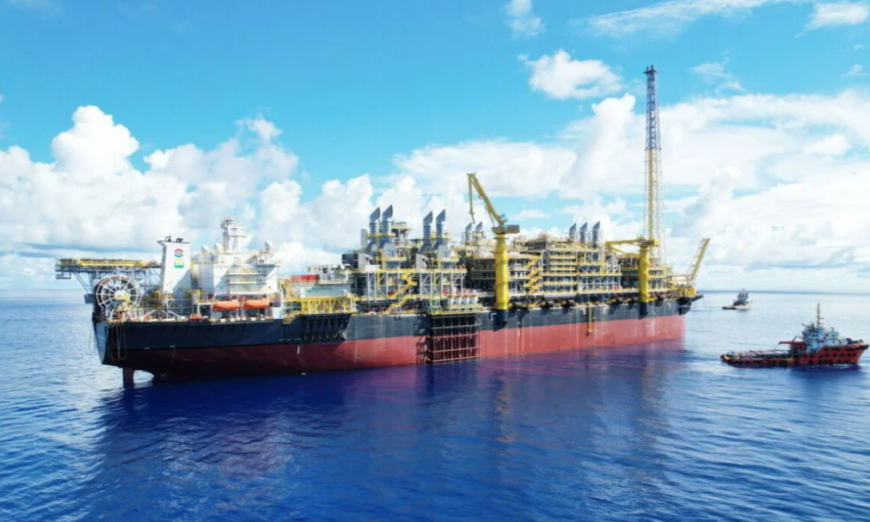Photo sourced from MODEC.
Thanks to improved well productivity, the breakeven point for oil production at the so-called pre-salt fields on Brazil’s coastal shelf (taking into account capital and operating expenses) has been halved, going from $70 per barrel in 2014 to $35 per barrel in 2022. At the same time, the share of pre-salt fields in the country’s oil production has risen from just over 50% in 2018 to 70% in 2022. These data are provided by the U.S. Energy Information Administration (EIA).
Pre-salt fields are fields located at a depth of 6,000 to 7,000 meters under a two-kilometre thickness of the World Ocean and layers of bottom rocks and salt. Exploration activities within these fields have prompted a review of Brazil’s oil reserves: the volume of proven reserves has gone from 8.5 billion barrels in 2000 to 11.9 billion barrels (0.7% of global reserves) in 2020, according to the Energy Institute (no later data are available). Commercial development of pre-salt fields, including Tupi, Buzios and Sapinhoá in the Santos Basin south of Rio de Janeiro, has allowed Brazil to increase oil production from 2.7 million barrels per day (bpd) in 2012 to 3.2 million bpd in 2022 (bpd).
As a result, Brazil has become a major oil exporter. In 2022, Brazil’s oil exports reached 1.2 million bpd, exceeding the exports of not only South American countries but also Mexico (1 million bpd). Asia-Pacific countries were the key importers of Brazilian oil, accounting for 58% of supplies in 2022 (708,000 bpd), with European and North American countries at 22% (273,000 bpd) and 12% (146,000 bpd), respectively, and Latin America and the Caribbean at 8% (103,000 bpd).
Brazil is likely to ramp up its oil production and exports in the coming years. Even before Brazil joined OPEC+, the largest national company, Petrobras, which controls about 60% of oil production in the country, announced its plans to increase total hydrocarbon production from 2.8 million bpd of oil equivalent (toe) in 2024 to 3 million bpd of oil equivalent in 2026 and 3.2 million bpd of oil equivalent in 2028.
The increase in supply will be achieved primarily by the launch of floating production, storage and offloading units (FPSO). Rystad Energy expects Brazil to provide precisely one-fourth of global orders for the construction of FPSOs (12 out of 48 units).

